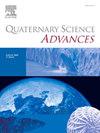Heavily eroded Pleistocene landscape and site-forming processes of the Acheulean artifacts-bearing Holocene sediments, Eastern Desert, Sudan
Abstract
Since the Middle Pleistocene, the Sahara region has undergone strong environmental changes resulting from climate changes. Dry periods, constituting an ecological barrier to human presence, alternated with wet periods when the Sahara area was covered with green savanna and an extensive network of watercourses, allowing the area to be occupied by hunter-gatherer groups. Responding to the Quaternary climatic changes, hominin dispersal was channeled through vegetated corridors. Such evidence for human settlements connected to Pleistocene green corridors in the Sahara region has been discovered in the research area called EDAR (Eastern Desert Atbara River). This area comprises a cluster of Acheulean and Middle Stone Age (MSA) sites discovered in the fluvial sedimentary context. This manuscript discusses the occurrence of Middle Pleistocene Acheulean artifacts in much younger sediments documented at the site EDAR 6. These Acheulean artifacts are present within thick Holocene calcareous sandy silts formed between 2.7 ka and 8.7 ka based on an optically stimulated luminescence (OSL) chronology, which is also supported by paleomagnetic analysis. The stone gravelly artifacts mantled above the eolian deposits have been known in other Paleolithic sites under the desert environment of Northern Africa. We propose that the relocation of the Palaeolithic artifacts was due to long-lasting erosional and redepositional processes affecting the Acheulean artifacts-bearing sediments since the Middle Pleistocene. We interpret that the cumulative results of the two processes, i.e., the gravel framework dilation and the gravel overpassing, allowed the stone artifacts to be exposed at the surface or incorporated in the Holocene sediment layers.

 求助内容:
求助内容: 应助结果提醒方式:
应助结果提醒方式:


